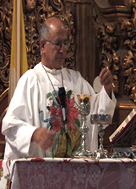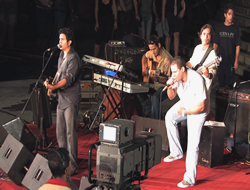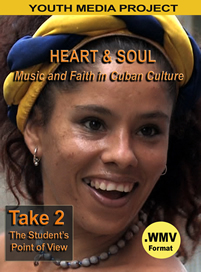
HEART & SOUL
Music and Faith in Cuban Culture
How have the Cubans managed to hold onto both their
religious beliefs and musical heritage through centuries of oppression?
This Module Contains:
-
General DVD with 2.15 hours of digital footage of life in Cuba.
-
Topic-specific DVD with 3.39 hours of digital footage illustrating religion and music in festivals, private celebrations, and daily life.
-
Transcripts of all interviews.
-
Comprehensive background information and summary materials (sample) of the footage, including flowcharts (sample)
-
Cutting-edge curriculum: teaching unit supporting social science standards complete with class activities, grading rubrics, four Power Point presentations, lecture materials, graphic organizers, homework assignments, a video on how to use the footage, and student briefing materials.
What Moves the Cubans? Castro once tried to cancel Christmas, and for many years worked to make Cuba a secular state. Music was heavily censored and musicians who did not adhere to the party line were banned, or worse. How – and why - have the Cubans managed to hold onto their religious beliefs through centuries of oppression (Santeria) and forty years of political suppression (Castro)? Does conflict strengthen a belief system? How far is it possible to legislate culture and/or religion? Lately the Cuban government has allowed Cubans considerably more freedom of worship and even sponsored modern pop concerts. How does music give voice to the Cuban culture and what does Cuba’s unique blend of Catholicism and Santeria tell you about Cuban society?
Teaching Unit Overview: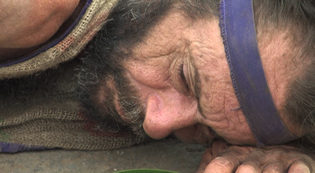 Both religion and music profoundly influence – and reflect – our values, beliefs, and behaviors. Religion is the lifeblood of the sacred and music of the secular sides of our society – and yet both often function as conduits of conflict and change. Young people use music to rebel against existing cultural values and systems. Conquering armies impose new religions upon vassal states and the conquered maintain their traditions through secret ceremonies and songs. Over time, opposing values and beliefs merge to create an entirely new and original culture. Once students have thoroughly investigated the factors that have shaped Cuba’s unique religious and musical traditions, they will determine their impact on Cuba’s history, politics, beliefs, and culture.
Both religion and music profoundly influence – and reflect – our values, beliefs, and behaviors. Religion is the lifeblood of the sacred and music of the secular sides of our society – and yet both often function as conduits of conflict and change. Young people use music to rebel against existing cultural values and systems. Conquering armies impose new religions upon vassal states and the conquered maintain their traditions through secret ceremonies and songs. Over time, opposing values and beliefs merge to create an entirely new and original culture. Once students have thoroughly investigated the factors that have shaped Cuba’s unique religious and musical traditions, they will determine their impact on Cuba’s history, politics, beliefs, and culture.
Footage Highlights: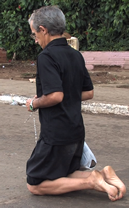
-
The Catholic festival of San Lazaro in Havana
-
A private celebration of Santeria in a Cuban home
-
Student orchestra in a rural school.
-
Local Cuban music/dance show
-
Dancing party in a local park
-
Santeria New Year's ritual and priestess
-
Professional trumpet player on Havana's waterfront
One-year, single classroom educational license: $250. Introductory price: $95.![]()
Site license: contact Take 2
District license: contact Take 2


